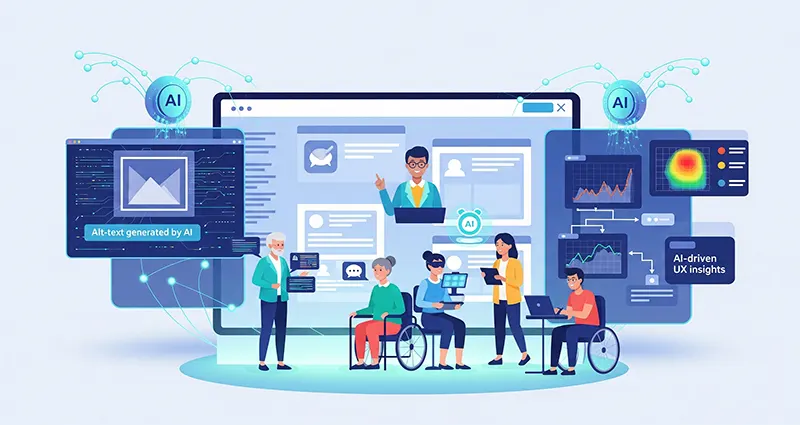In today’s digital world, ensuring that websites are accessible to all users, including those with disabilities, is not just a best practice—it’s a necessity. Artificial Intelligence (AI) has emerged as a powerful ally in improving website accessibility and enhancing user experience (UX). By leveraging AI technologies, businesses and developers can create inclusive, user-friendly websites that meet diverse user needs efficiently. Here’s how to use AI for website accessibility and user experience.
Understanding the Importance of Accessibility and UX
Website accessibility ensures that digital content is usable by people with disabilities, including visual, auditory, physical, and cognitive impairments. Meanwhile, user experience focuses on enhancing how users interact with a website, making it intuitive, efficient, and enjoyable. Combining these two aspects using AI can lead to websites that serve a broader audience while maximizing engagement and satisfaction.
How to Use AI for Website Accessibility
- AI-Powered Automated Accessibility Audits
AI tools can scan websites to identify accessibility issues such as missing alt text, poor contrast ratios, improper heading structures, and keyboard navigation problems. Platforms like AXE, Lighthouse, and Siteimprove use AI algorithms to provide instant reports and actionable insights, enabling developers to fix issues rapidly. - Intelligent Screen Reader Improvements
AI-enhanced screen readers use natural language processing (NLP) to better interpret and vocalize complex web content. This allows visually impaired users to comprehend context, formatting, and dynamic content more effectively, improving their interaction with websites. - Real-Time Captioning and Transcription
AI-driven speech recognition technologies can generate real-time captions for multimedia content such as videos and podcasts. This benefits users with hearing impairments and improves overall comprehension for all users. - Adaptive User Interfaces
AI can dynamically customize a website’s interface based on individual user needs, such as adjusting font sizes, color schemes, or navigation complexity. By analyzing user behavior and preferences, AI ensures that websites are not just accessible but also comfortable for each user.
How to Use AI for Enhancing User Experience
- Personalized Content Recommendations
AI analyzes user behavior, browsing history, and preferences to deliver personalized content and product recommendations. This ensures that users find relevant information quickly, reducing friction and increasing engagement. - Chatbots and Virtual Assistants
AI-powered chatbots provide instant support by answering common questions and guiding users through the website. By mimicking human interaction, they improve response times and help users navigate complex sites effortlessly. - Voice User Interfaces (VUI)
Integrating voice recognition enabled by AI allows users to interact with websites through spoken commands. This is particularly beneficial for users with physical limitations or those who prefer hands-free navigation. - Behavioral Analytics for UX Optimization
AI tools monitor how users interact with a website in real time, identifying pain points such as confusing layouts or dead-end links. Insights derived from behavioral analytics inform continuous improvements in design and functionality.
Best Practices for Implementing AI in Accessibility and UX
- Combine AI with Human Oversight: While AI can automate many tasks, human expertise is vital for nuanced understanding and testing of accessibility and UX.
- Stay Compliant with Standards: Ensure AI implementations align with global accessibility standards like WCAG (Web Content Accessibility Guidelines).
- Prioritize Privacy: When AI collects user data for personalization or behavior analysis, maintain strict data privacy and security protocols.
- Continuously Update AI Models: AI technologies evolve rapidly; keeping algorithms updated ensures sustained accuracy and effectiveness.
Using AI for website accessibility and user experience is transforming how businesses approach digital inclusivity. AI not only automates time-consuming accessibility audits and adaptations but also personalizes user journeys, making websites more engaging and user-friendly. By embracing AI-driven tools and strategies, organizations can create websites that are not only compliant with accessibility standards but also deliver exceptional experiences to all users, regardless of their abilities.









